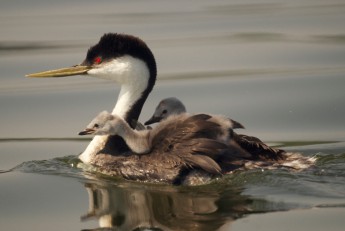Anyone who has watched episodes of the great (and not so great) medical dramas – ER, Grey’s Anatomy, Scrubs, MASH – has heard the classic saying, “first, do no harm.” Originating in the nineteenth century, in Latin, “primum non nocere” is often quoted as part of the famous Hippocratic oath. To this day, the Hippocratic oath, or a modernized version, remains a symbolic rite of passage for medical students as they embark on their careers as physicians. While doctors of veterinary medicine (aka veterinarians) recite a similar oath upon entering the profession, I believe that the ethical construct of “first, do no harm” extends far beyond the medical community.

American Veterinary Medical Association Veterinarian’s Oath: Being admitted to the profession of veterinary medicine, I solemnly swear to use my scientific knowledge and skills for the benefit of society through the protection of animal health and welfare, the prevention and relief of animal suffering, the conservation of animal resources, the promotion of public health, and the advancement of medical knowledge. I will practice my profession conscientiously, with dignity, and in keeping with the principles of veterinary medical ethics. I accept as a lifelong obligation the continual improvement of my professional knowledge and competence.
Wildlife rehabilitators are all too familiar with the story of a concerned and well-meaning member of the public showing up on their doorstep with an “orphaned” baby bird, bunny, etc. Although there are instances of abandonment, more often than not these baby animals have been left alone temporarily or fallen out of a nest, and in turn were kidnapped rather than orphaned. This is the perfect example of how anyone interacting with or trying to help wildlife can and should imbibe the principle of “first, do no harm.” If we rewind this scenario…..I’m a member of the public and I find a baby bird under a tree in my yard. What’s the first thing I do? Pick it up and HELP it, right? WRONG. That could actually do the animal HARM. My first step should be to ASK for help from the professionals. There are ample resources available for individuals who want to help wildlife by “first, not doing harm,” for example the “Help, I found a [insert species]!” and “Find a Wildlife Rehabilitator” tools from the National Wildlife Rehabilitators Association.”
Now you may be asking yourself, what does any of this have to do with oiled wildlife? Well, let me pose a similar situation, with a few tweaks. I’m a member of the public and I come across a bird (or birds) covered in oil. What’s the first thing I’m going to do? I’ve seen the Dawn commercials – I’m going to pick it up and wash off that toxic oil right? WRONG. That will do the animal HARM. My first step should be to ASK for help from the professionals (aka the Oiled Wildlife Care Network)!

The Oiled Wildlife Care Network and our network of member organizations go through extensive training in order to “first, do no harm” when helping oiled wildlife. We follow scientifically and experience driven protocols to provide the best capture and care of oiled wildlife in a manner that is both safe for the animal and the [human] responder.
Going back to the situation above, a member of the public without training in oiled wildlife care might think that the first step in the rehabilitation process is to wash the animal. But, did you know that in many situations oiled animals are stabilized for two to three days before being washed? This may come as a surprise because oil is toxic right? While that IS true, there are other things to consider. For example, most oiled wildlife come into care starving, dehydrated, cold, weak and anemic. If we immediately put them through the very stressful wash process, we actually risk doing MORE HARM. Instead, the first few days of an oiled animal’s care is focused on replacing fat stores, rehydration, thermoregulation and replacing blood volume. Once an animal is strong enough, then it is ready for wash (which is performed by trained professionals).
The top 5 things you can do to “first, do no harm” for oiled wildlife
- Do NOT attempt to rescue or wash oiled wildlife yourself – you risk harm to both the animal and yourself.
- If you see an oiled animal, REPORT it to the Oiled Wildlife Care Network at 1-877-UCD-OWCN (877-823-6926). Take a photo with your cell phone, note your GPS coordinates and keep your eyes on the animal until you are able to speak with a wildlife professional.
- Stay SAFE by keeping yourself and your pets out of affected areas – oil is toxic!
- Consider becoming affiliated with an OWCN Member Organization so you can help at the next spill.
- If you cannot become a pre-trained volunteer, consider donating to your local wildlife rehabilitation organization, which helps injured wildlife year-round.
So, with that I ask that the next time you are faced with a situation where you want to help wildlife in need, remember to “first, do no harm.”



















You must be logged in to post a comment.